Sally Field's Memoir Is Powerful
The Two Real Lolitas
Turning Seventy, Yikes!
Bullets to Bells: A Powerful Collection of Poems
Thinking in Twelves
A Handmaid's Tale: Literature of Witness
Defeating A Fib At Last-1
Russian Roulette Is a Hot Read
Life Among the Savages Still Delightful
Shirley Jackson's Haunted Life
Barcelona Photographs
|
Because I am needed to care for a loved one following his surgery, I am suspending my blog activity, hopefully for no more than several months. Also, I MUST finish writing a book I've been working on for over three years. When I've achieved those two things, I'll return to posting three or four times a week. Until then, please feel free to browse through my archives located to the far right. Below you can find links to a few of my favorite posts from the past year. RJ Thanks for stopping by . . . until we meet again, keep reading!
0 Comments
My Book World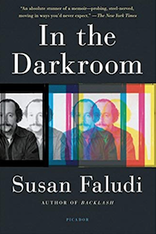 Faludi, Susan. In the Darkroom. New York: Picador, 2016. One sign that a book may be spectacularly well written is that the author’s process seems inscrutable. In the case of Susan Faludi, she combines journalistic techniques of conducting interviews, whether recorded or not, along with long months, perhaps years of tedious research of all kinds, but finally she observes and interprets the relationship she has (or has not) with her own father. Yet how she weaves all these together remains a wonderful mystery. Faludi’s memoir is comprised of many things: history of the tragic past of Hungary and Hungarian Jews, how that history informs her father’s life as Steven Faludi, her more recent life as Stefi Faludi; it is a journal of the author’s relationship with her father over many years, even years in which they neither speak nor see one another; it is a book about identity, how one can shapeshift to obscure oneself, whether it is her father’s masquerading as a young Nazi in order to rescue family members from being executed or whether it his change from male to female, whether it is changing one’s name from Friedman to Faludi. Ultimately, the book portrays the long, fraught journey that father and daughter take together, a journey that, at any time could be cut short, but because of some ephemeral formula, manages to continue until the very end, when Stefi’s very substantial constitution finally fails. This body—lying on a hospital bed in Budapest has sustained parental neglect, physical and emotional battles of war, marriage, and family life, abuse it has both endured and afflicted on her daughter, the physical and emotional rigors of gender reassignment surgery—finally succumbs to death. The author has flown from Portland, Oregon, to be with her father Stefi in Budapest, yet Susan sees that her father is resting, she decides she must get some rest at her father’s apartment. She is awakened by a phone call at six a.m. the next morning: “Hallo,” the voice in the receiver said. “This is Dr. Molnárné.” As with the entirety of Susan’s relationship with Steven/Stefi, this process has not gone as it should. According to Susan’s thinking, she was to have located a dementia specialist, and that act would perhaps extend his life. At worst, Susan was to have been at Stefi’s side; they were to have had one final word of reconciliation before he parted; one final hand-holding while blood still flowed through both bodies.
An astounding book, where echoing off the title, the author takes the reader through many dark rooms, including photographic darkrooms, but others more sinister, to limn the lives of an extraordinary father and her daughter. A must read.
NEXT TIME: My Book World, Susan Faludi's Memoir, In the Darkroom
MY JOURNEY OF STATES is a series in which I relate my sixty-year quest to visit all fifty states in the U.S. In each post I tell of my relationship to that state, whether brief or long, highlighting personal events. I include the year of each state's entry into the union and related celebrations. I hope you enjoy my journey as much as I have. This is the thirty-eighth post of fifty. Maine (2008)Ken and I drove from our outpost in Massachusetts to Maine in the autumn of 2008, just prior to the election. It seemed like quite a distance, at first. Could we really make a day trip of it? Turned out to be a little over a three-hour drive, what we consider a short jaunt in Texas. A friend from the area had told us we must indulge in a lobster roll or two, so for lunch we stopped at a large establishment that seemed to specialize in it (large lobster sign). Meh. It wasn’t anything to write to Washington about, but we enjoyed it and moved on to the Acadia National Park, where we climbed Cadillac Mountain. And then onto Maine’s magnificent coast and charming lighthouses. We spent the night in a motel, and on our drive back, half the political signs seemed to be for Obama and the other half for McCain, a prescient view of our present situation. Maine, the twenty-third state admitted to the Union, will celebrate its bicentennial in 2020. HISTORICAL POSTCARDS & TRUNK DECALSIf you missed earlier My Journey of States posts, please click on a link: NEXT TIME: My Book World, Susan Faludi's Memoir, In the Darkroom
NEXT TIME: My Journey of States-38 Maine
My Book World Posey, Parker. You’re on an Airplane: A Self-Mythologizing Memoir. New York: Blue Rider, 2018. I must preface my remarks by professing that I am a HUGE Parker Posey fan. I luh, luh, love her work. I can’t say I’ve seen ALL of her films, because sometimes they’re not easy to find, but I have to declare that whether Posey is the kooky character in the Tales of the City series or featured in one of her other roles, she is a brilliant character actress who prefers those parts to leading ones; at least that is the impression she gives. Yet I believe that because of her power as an actor her best roles may yet lie ahead, if she can find the right properties. So say I. Unlike many actors, who have suffered untold damage in their childhoods, Posey seems to have flourished because of the strong relationships with family members, particularly her parents, who encourage her in her creativity. Yet Posey does not make acting sound easy or even appealing. Rather, she shares in great detail what many of her film shoots are like, the actors and directors with whom she associates herself for weeks or months. The squabbles, insightful observations about the business of making film. What a fun yet significant read! Part scrapbook, part photo album, part Dear Diary, part tell-all, part recipe book, this memoir reads as if it is a monologue right out of one of her films. At turns, kooky, serious, honest, even a bit mean (in a kind sort of way): “I also started doing this thing when I drove around, that is completely obnoxious or funny, depending on who you are and how you feel: I’d roll down my window, get a person’s attention on the sidewalk or crossing the street, and call out, ‘Excuse me! Are you a vegan?!’ Or I got the attention of someone in a car at a stop sign and said causally (but a little too loud), ‘I AM A VEGAN.’ This was more fun in the passenger seat, when I’d get to hang out of the car. It was good clean fun—unlike veganism, which is hard work. These passages seems so indicative of Parker Posey’s life: somewhat carefree, devil-may-care-what-happens-to-me, opinionated, fearless. Sort of her generation’s Tallulah Bankhead; in fact, I could so see her playing Bankhead in a biopic. Hey, Parker’s agent, are you reading this? Tallulah Bankhead, you hear! Yet, Posey reveals what may be her true view of acting: “It’s an industry (an art, hopefully) full of orphans left to create their own worlds with one another. I don’t feel glamorous, I feel like a possum—the animal born clinging to its mother’s tail, that grows up by falling off it, and probably too soon. Acting is the possum’s defense. Have you ever seen this? When threatened, they play dead—and they’re very convincing at it. They scare themselves so deeply that their eyes roll back into their heads and their little tongues stick out. They’ll even take it so far as to froth at the mouth They’ll go on with the act as long as they’re terrified and its truly ghoulish, because they’ve been known to be buried alive—they’re famous for it” (227). The conceit that formulates this book is that Parker is seated on an airplane and sharing her life with a seatmate. Occasionally, the reader forgets, until once again, Posey throws in a second-person address to this imaginary person. I say imaginary because I believe this person is really dead, or at least never talks back to Parker Posey. The format may or may not work, but Posey’s life is certainly quirky yet profound enough to sustain my interest for over 300 pages!
NEXT TIME: My Journey of States-38 Maine
NEXT TIME: My Book World
MY JOURNEY OF STATES is a series in which I relate my sixty-year quest to visit all fifty states in the U.S. In each post I tell of my relationship to that state, whether brief or long, highlighting personal events. I include the year of each state's entry into the union and related celebrations. I hope you enjoy my journey as much as I have. This is the thirty-seventh post of fifty. New Hampshire (2003, 2008)What I recall most about New Hampshire is that Ken and I were visiting in Massachusetts and decided to make a daytrip to NH, but a driving rainstorm kept us in the car, mostly. Sad to say that the other time we drove through New Hampshire it was on our way to Maine. NH—the Granite State and tenth least populous—was the ninth state to be admitted to the Union and celebrated its bicentennial in 1988. Historical Postcards & Trunk DecalsIf you missed earlier My Journey of States posts, please click on a link: NEXT TIME: My Book World, Parker Posey's Memoir
NEXT TIME: My Journey of States-37 New Hampshire
My Book World Field, Sally. In Pieces: A Memoir. New York: Grand Central, 2018. Many celebrity memoirs or autobiographies seem to read as if the author has recorded his or her story and transcribed it word for word—with little benefit of revision or constructive editing. Not so with Sally Field. The arc of her narrative advances from one point of tension to the next until the climax splatters on the page like a scene from one of her films. In making herself vulnerable to all the revealed truths of her life, she encourages readers to acknowledge their own truths, and because of this honesty readers are willing to forgive her her foibles. Even if Field does not possess a degree from an accredited institution (a lifetime regret on her part), she creates prose that stands up to that of any fine writer. Moreover, she does a superb job of connecting the emotional DNA from great-grandmother to grandmother to mother to Sally. She quotes from Jung as her touchstone: “‘Nothing has a stronger influence psychologically on their environment and especially on their children than the unlived life of the parent’” (29) That both her mother and stepfather are failed actors (in the sense that they cannot sustain lifelong careers) contributes to how they relate to Sally as the child. The public may be tempted to believe that because one is offered a TV series at age eighteen said actor has it made for the rest of her life. Not so. Field makes plain how actors for many years may live from hand to mouth—without health insurance, without home ownership, sometimes without food for themselves or families. Not only do Sally’s parents experience these pitfalls, but so does she. As the star of Gidget, she is suddenly supporting her parents and siblings, because both her parents are at low points their own careers. And the path never gets easier. One might be paid quite well for one film but then the next project is not in sight, and an actor must stretch that income until something does come along. Moreover, Field has her own children and spouse to support, at times repeating the pattern of living she has grown up with. But the story of Field’s acting career is only one strand of her memoir. She shares the most intimate parts of her life which help to illuminate who she is as an actor. I am reminded of her titular role in Norma Rae, when she stomps up onto a table and unites laborers where she works, and it is not difficult to believe that Field gains her power from a very real scene transpiring with her stepfather, one of the most dramatic scenes from the book. Sally is fifteen, both her mother and stepfather, Jocko, are drunk, and he picks a fight with Sally, informing her she’s a smart-ass, that he knows her inside and out, and she denies that he knows anything about her: “The room turned red, bright blazing red. I rose from where I sat perched on the edge of my childhood, rose up through years of fear, fury, and longing, of confusion and love. I stepped onto the coffee table and there we were again, eye-to-eye, nose-to nose. Wow. That page and a half stuns me. I suddenly see, perhaps, (for who knows where it emanates from) the power Field draws from to act, to create the memorable characters that she has for decades—the place inside her where she must retreat again and again, mining emotional truth to create honest and vibrant characters. As I said, Wow. Field’s memoir continues at this pace until the very end, in which she reaches resolution about a very key event from her childhood, one through which the reader can view Sally Field as a whole, integrated person, one who has more than earned what one might call happiness.
NEXT TIME: My Journey of States-37 New Hampshire
NEXT TIME: My Book World, Sally Field's Memoir, In Pieces
MY JOURNEY OF STATES is a series in which I relate my sixty-year quest to visit all fifty states in the U.S. In each post I tell of my relationship to that state, whether brief or long, highlighting personal events. I include the year of each state's entry into the union and related celebrations. I hope you enjoy my journey as much as I have. This is the thirty-sixth post of fifty. Vermont (2003)In 2003, I applied for entrance into the distinguished Bread Loaf Writers’ Conference. In addition to filling out a long form I was asked to include a writing sample. I secured airfare and accommodations immediately to lock in good prices for Ken and myself. Months later, I received the news that I had not been accepted. Ken and I decided to make a vacation of it and go anyway. After all, we were staying in nearby Middlebury, not on the Bread Loaf campus itself. The conference opened its doors each evening to the public for literary events, and we attended a reading by Charles Baxter and one by Sigrid Nunez. I continued to apply to the conference, and I was ultimately accepted in 2006 but turned it down because of ill health. At any rate, back to 2003, Ken and I enjoyed traveling throughout the state of Vermont, gazing upon verdant farmland, the White Mountains thick with hardwoods. It would be, for us, a grand place to live . . . for about five months out of the year. During our twelve-day visit we took a shoreline cruise on Lake Champlain, spent time at Fort Ticonderoga and Fort St. Frédéric, both located over the border in New York, and visited Justin Smith Morrill State Historic Site in Strafford, Shelburne Museum, the state house in Montpelier, and the Bennington Museum. I wish the visits I made to every state could be this leisurely and comprehensive. Vermont is the fourteenth state and celebrated its bicentennial in 1991. Historical Postcards & Trunk DecalsIf you missed earlier My Journey of States posts, please click on a link: NEXT TIME: My Book World, Sally Field's Memoir, In Pieces
NEXT TIME: My Journey of States-36 Vermont
My Book World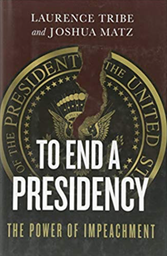 Tribe, Laurence, and Joshua Matz. To End a Presidency: The Power of Impeachment. New York, Basic, 2018. This eminently readable book explicates a complex subject, one worthy of study during a period when the term “impeachment” is bandied about in the media with incredible ease. The authors do a commendable job of, first of all, discussing the laws governing impeachment of a president and how they sprang to life in the first place as part of the US Constitution. On the other hand, Tribe and Matz help readers to understand that nothing about impeachment is simple. They limn the intricacies of the laws, how the proceedings must begin in the House of Representatives and can conclude only in the Senate. They tell us about how difficult it is to obtain a two-thirds majority vote (under normal times, let alone now with such great partisan divides) in either house to advance impeachment. They explain which offenses are impeachable and which are not and why, that it is not a matter of removing a president from office because he is a boor. He must have committed a crime or misdemeanor. Even with those parameters, it is never a simple matter for Congress to decide. Ultimately, the authors rule against impeaching our current president, largely because of the disruption it would cause in our society. Under normal circumstances, the executive and judicial branches of the government would help to reign in the abuses of a president. Even now, during times that do not seem normal to those of us of a certain age, the other two branches are doing their job. The House will be governed, beginning in January, 2019, by Democrats, who can begin to call the actions of President 45 into question. Even the Supreme Court, which has now been loaded with conservatives, could surprise the president. The two men whom he seated owe him absolutely nothing. The president cannot remove them from their seats if they should rule against him. And if they do favor him in ways that are questionable, they themselves could be subject to impeachment . . . theoretically. As the authors say in conclusion: “We must abandon fantasies that the impeachment power will swoop in and save us from destruction. It can’t and it won’t. When our democracy is threatened from within, we must save it ourselves. Maybe impeachment should play a role in that process; maybe it will only make things worse. Either way, reversing the rot in our political system will require creative and heroic efforts throughout American life. And at the heart of those efforts will be the struggle to transcend our deepest divisions in search of common purpose and mutual understanding” (240-1). NEXT TIME: My Journey of States-36 Vermont
MY JOURNEY OF STATES is a series in which I relate my sixty-year quest to visit all fifty states in the U.S. In each post I tell of my relationship to that state, whether brief or long, highlighting personal events. I include the year of each state's entry into the union and related celebrations. I hope you enjoy my journey as much as I have. This is the thirty-fifth post of fifty. MASSACHUSETTS (2003, 2005, 2006, 2008, 2012, 2018)The first trip that Ken and I made during our retirement was to Massachusetts, in 2003 (see photos above), and thereafter we made at least five more visits. Most often we stayed with a friend who lived in Northampton. She taught at the University of Massachusetts in Amherst, and commuted the eleven-mile jaunt. Most often we went in autumn, and the changing trees served as a dramatic backdrop to whatever we chose to do, whether it was to daytrip over to Pittsfield to tour author Edith Wharton’s home, The Mount (three times), or the Norman Rockwell Museum in Stockbridge. We saw Williams College in Williamstown, Historic Deerfield and Deerfield Academy, the rock at Plymouth, where he lunched on authentic New England clam chowder. And finally, we visited Boston in 2018 on a cool, clammy day in October that made for oddly beautiful photographs. Massachusetts was the sixth state to be admitted to the union in 1788. Historical Postcards & Trunk DecalsIf you missed earlier My Journey of States posts, please click on a link: LOOK FOR My Book World in Future Posts
|
AUTHOR
Richard Jespers is a writer living in Lubbock, Texas, USA. See my profile at Author Central:
http://amazon.com/author/rjespers Archives
June 2024
Categories
All
Blogroll
Websites
|


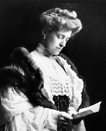




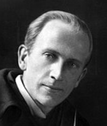







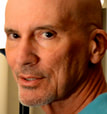




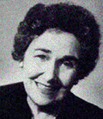



 RSS Feed
RSS Feed